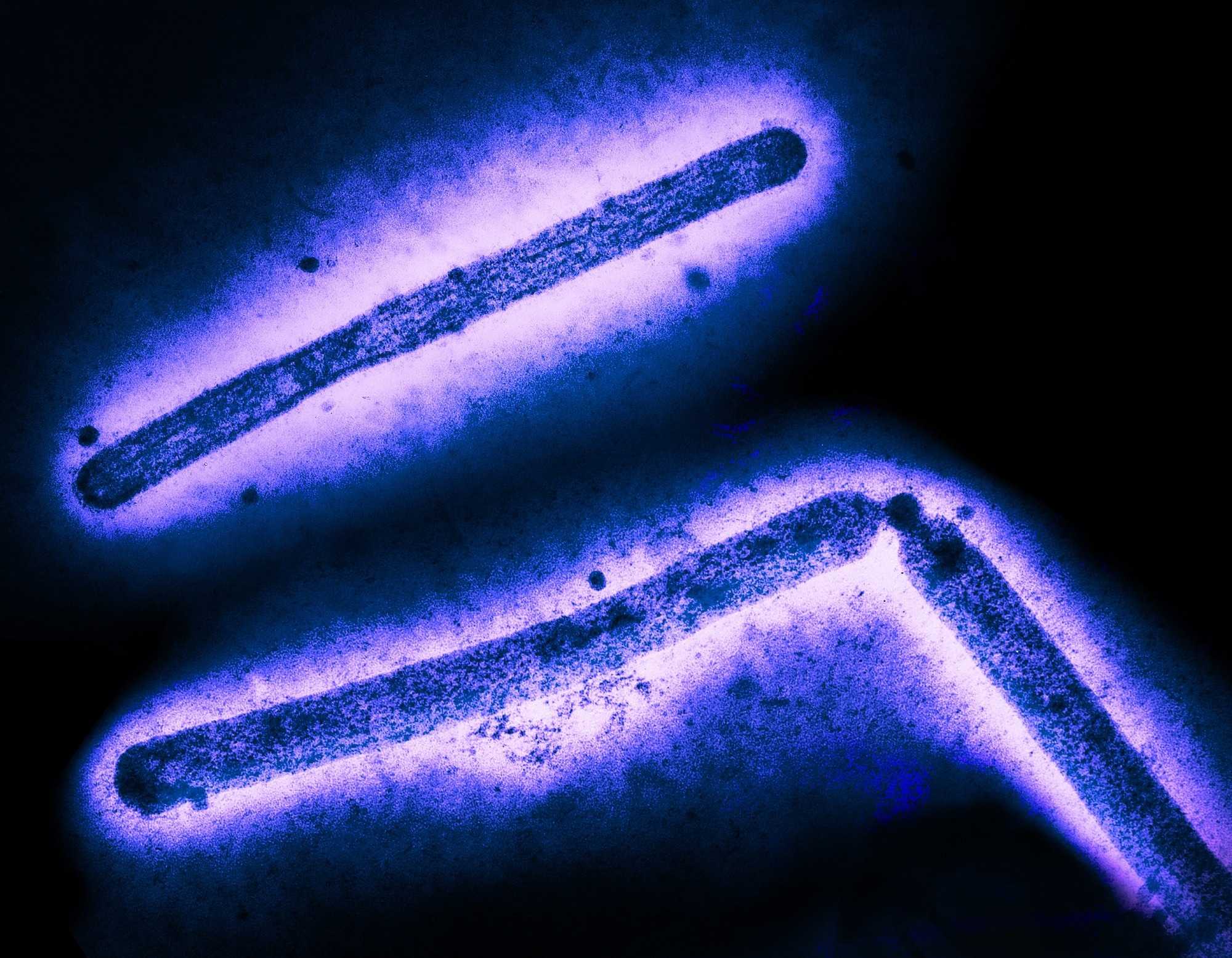In a latest examine revealed within the journal , researchers examined the phenotypic and genetic evolution of clade 2.3.4.4b extremely pathogenic avian influenza A(H5N1) viruses following their unfold to North America (NAm).
Clade 2.3.4.4b A(H5N1) viruses unfold quickly over Africa, Europe, and Asia in 2021, infecting home animals and wild birds. Viruses of the identical clade had been found in North American areas in the direction of the top of 2021, indicating continued transcontinental enlargement. Their zoonotic transmission potential, reassortment, and enhance in virulence of the viruses and human infections are regarding.
Examine: . Picture Credit score: CDC and NIAID
Concerning the examine
Within the current examine, researchers reported on the fast evolution of A(H5N1) influenza viruses after their intercontinental unfold to North America.
The transmission dynamics and pathogenicity of two A(H5N1) wild hen viruses, A/American wigeon/South Carolina/22-000345-001/2021 (Wigeon/SC/21) collected in December 2021 and the A/bald eagle/Florida/W22-134-OP/2022 obtained in February 2022, had been decided. Ferrets and white leghorn rooster had been used to guage A(H5N1) virus transmission. Genotypic and antigenic analyses of clade 2.3.4.4b viruses had been carried out, and different viruses of the identical clade had been pathotyped amongst ferrets.
To evaluate virulence, nasal wash titers had been decided and expressed as median tissue tradition infectious dose (TCID50/ml), adopted by histopathological examination of ferrets’ higher respiratory tract, decrease respiratory tract, and extrapulmonary tissues. Additional, BALB/c mice had been inoculated with the viruses to analyze whether or not the virulence and pathogenicity amongst ferrets had been mirrored in different influenza mammalian fashions. Median deadly (LD50) doses had been decided to evaluate viral lethality. Syncytium assays had been carried out to detect the pH of hemagglutinin (HA) activation, and reporter gene assays had been carried out to evaluate viral polymerase gene actions.
Undifferentiated human airway epithelial cells (Calu-3) and first differentiated human airway cultures had been used to guage replication kinetics. Sera had been obtained from 48 people aged between 18.0 and 46.0 years to measure influenza virus neuraminidase (NA) protein-targeted cross-protective antibodies utilizing enzyme-linked lectin assays (ELLA). Antiviral susceptibility of clade 2.3.4.4b viruses was decided utilizing NA inhibitors (NAIs), zanamivir and oseltamivir, and an energetic metabolite of the endonuclease inhibitor baloxavir marboxil, baloxavir acid (BXA).
Outcomes
Minimal bird-mammal transmission of the viruses was noticed. Amongst ferrets, Wigeon/SC/21 and Eagle/FL/22 inoculations resulted in delicate and extreme infections, respectively, as evidenced by extra important imply titers in nasal washes of Eagle/FL/22 at one, three-, and 5 days post-infection (dpi). The western motion of the two.3.4.4b clade was rapidly adopted by reassortment occasions in NAm wild avian influenza viruses and H5 2.3.4.4b viral organisms after A(H5N1) virus introduction into North America, ensuing within the acquisition of differing ribonucleoprotein gene combos.
For instance, Eagle/FL/22 developed North American wild avian nucleoprotein (NP), and polymerase fundamental (PB)-1 and a pair of genes after reassortment. 4 viral genotypes had been detected among the many sequenced 58.0 A(H5N1) influenza viruses. All viruses contained the NA, HA, non-structural (NS), and matrix (M) gene segments of Eurasian (EA) origin however possessed totally different Nam- or EA-origin NP and polymerase gene combos. Typically, monophyletic NAm segments had been noticed, indicating minimal reassortment, with the geographical unfold of the resultant viruses.
NAm-strain A(H5N1) virus proteins confirmed no markers associated to virulence amongst mammals, and all had been antigenically homogeneous. The extra viruses pathotyped had been A/Pink-shouldered Hawk/ North Carolina/W22-121/2022 (Hawk/NC/22); A/Fancy Rooster/Newfoundland/FAV-0033/2021 (Ck/NL/21); A/Bald eagle/North Carolina/W22-140/2022 (Eagle/NC/22); and A/Lesser scaup/Georgia/W22-145E/2022 (Scaup/GA/22). NAm section acquisition correlated strongly with illness severity in ferrets, with the least extreme an infection by Ck/NL/21, possessing no NAm genes, and essentially the most extreme an infection by Scaup/GA/22, possessing 4 NAm genes.
The pattern prolonged to viral replication in tissues and histopathological findings. Viruses inflicting 100% lethality amongst ferrets and those who had acquired NAm segments, similar to Scaup/GA/22, Hawk/NC/22, and Eagle/FL/22, had the bottom LD50 values amongst mice. Eagle/FL/22 and Wigeon/SC/21 confirmed avian receptor specificity and comparable polymerase actions, with some variations in replication charges amongst Calu-3 cells and the human airway cultures.
Eagle/FL/22 and Wigeon/SC/21 N1-targeted antibody titers had been akin to these towards the seasonal CA/04 (H1N1)pdm09 NA, and the NA proteins of H5N1 viruses confirmed 90% similarity with A(H1N1) pdm09 viruses. The median efficient focus (EC50) and half-maximal inhibitory focus (IC50) values of the native and reassortant viruses examined had been much like these of the drug-susceptible human A(H1N1)pdm09 influenza viruses.
Total, the examine findings highlighted the present A(H5N1) 2.3.4.4b virus lineage’s inclination to reassort and assault the mind and spinal twine. The findings name for coordinated preparation to battle viral evolution and dissemination throughout the continent and restrict the consequences of a pandemic triggered by comparable A(H5N1) reassortant viruses.
